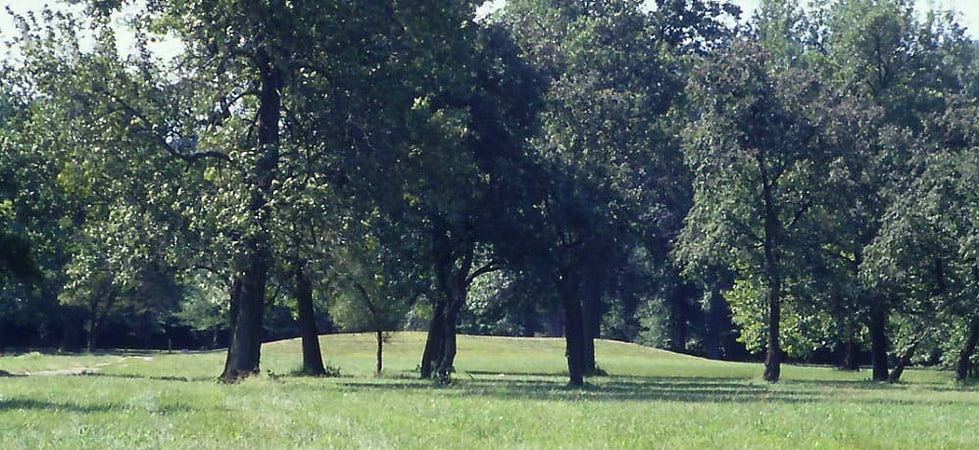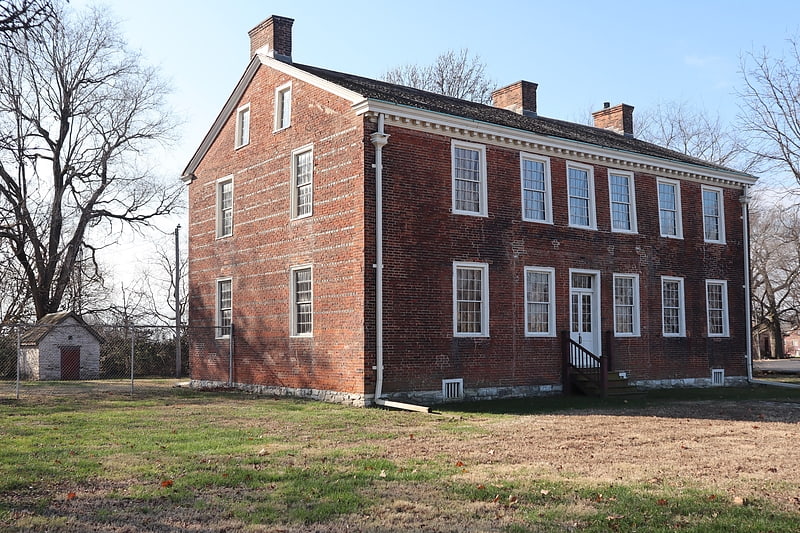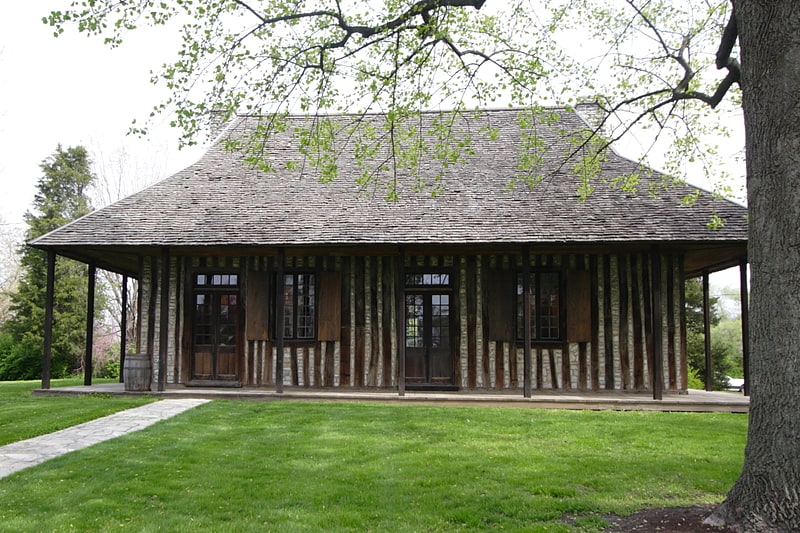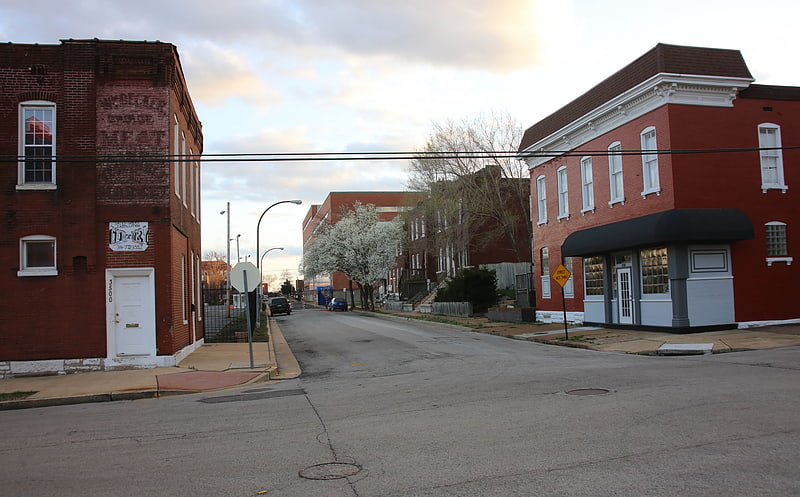Discover 7 hidden attractions, cool sights, and unusual things to do in Cahokia Mounds State Historic Site (United States). Don't miss out on these must-see attractions: Mound 72, Nicholas Jarrot Mansion, and Greater Saint Louis Air & Space Museum. Also, be sure to include Old Cahokia Courthouse in your itinerary.
Below, you can find the list of the most amazing places you should visit in Cahokia Mounds State Historic Site (Illinois).
Table of Contents
Mound 72

Cemetery in Collinsville, Illinois. Mound 72 is a small ridgetop mound located roughly 850 meters to the south of Monks Mound at Cahokia Mounds near Collinsville, Illinois. Early in the site's history, the location began as a circle of 48 large wooden posts known as a "woodhenge". The woodhenge was later dismantled and a series of mortuary houses, platform mounds, mass burials and eventually the ridgetop mound erected in its place. The mound was the location of the "beaded burial", an elaborate burial of an elite personage thought to have been one of the rulers of Cahokia, accompanied by the graves of several hundred retainers and sacrificial victims.[1]
Nicholas Jarrot Mansion

The Nicholas Jarrot Mansion is a historic house at 124 East First Street in Cahokia, Illinois and is operated as an inactive historic site by the Illinois Historic Preservation Agency. It is a State Historic Site, is listed on the National Register of Historic Places, and became a National Historic Landmark in 2001. Built in 1807–1810 for the son of French colonists, it is an extremely rare example of Federal architecture in the upper Mississippi River valley.[2]
Greater Saint Louis Air & Space Museum

The Greater Saint Louis Air & Space Museum is a museum with the mission to preserve and display historic air and space craft and artifacts, and provide educational programs.[3]
Address: 2300 Vector Dr, 62206 Cahokia
Old Cahokia Courthouse

Courthouse. The Cahokia Courthouse State Historic Site is a reconstructed French-Canadian structure built about 1740 at what is now 107 Elm Street, Cahokia, Illinois. At various times it has served as a house and as a courthouse. It is currently interpreted to resemble its appearance about 1800 as a frontier courthouse of the Northwest Territory. The courthouse was listed on the National Register of Historic Places on November 9, 1972.[4]
Carondelet

Neighborhood in St. Louis, Missouri. Carondelet is a neighborhood in the extreme southeastern portion of St. Louis, Missouri. It was incorporated as an independent city in 1851 and was annexed by the City of St. Louis in 1870. As of the 2000 Census, the neighborhood has a population of 9,960 people.[5]
Marine Villa

Neighborhood in St. Louis, Missouri. Marine Villa is a neighborhood of St. Louis, Missouri. The neighborhood is located just south of the large and historic Anheuser-Busch Brewery complex along the bluffs of the Mississippi River. It is further defined by Cherokee Street's Antique Row on the north, Gasconade Street on the south, South Broadway and Jefferson Avenue on the west, and the Mississippi River on the east.
The Marine Villa neighborhood lies along the Mississippi River, just a few miles south of downtown St. Louis. Originally part of the St. Louis Commons, this area was subdivided and gridded in 1855, with many of the early developments in the neighborhood being small farms and brickyards. Some of the oldest buildings in the neighborhood are small frame and brick farmhouses built in the 1860s, many in the form of a flounder house, a simple but unique vernacular home, often of one-and-a-half stories with a shed roof. With the construction of a north/south roadway called Carondelet Avenue, Marine Villa was able to continue developing as the city's population grew and expanded from the downtown core. The Lemp Brewery relocated from downtown to the northern edge of the Marine Villa neighborhood in the 1860s, and the neighborhood saw an influx of German immigrants who came to the neighborhood to work at several of the nearby breweries, including Lemp, Anheuser-Busch, and the Cherokee Brewery.
In 1890 the streetcar came through the neighborhood, creating an explosion in population and construction. Most of those buildings are still standing, and give the neighborhood its dense, diverse and historic architectural character. Along with the streetcar route, bustling commercial districts developed along Cherokee Street, South Broadway and Jefferson Avenue. Constructed entirely of brick, most of these commercial buildings are of two or three story construction, with first floor storefronts and residences above. Many are used today as they were originally intended, with small businesses occupying the first floor. These commercial districts are now home to the Chippewa-Broadway Business Association and the Cherokee Antique Row District. Surrounding the shopping districts the neighborhood is characterized by single and multi-family historic brick homes, built primarily in the late 19th and early 20th centuries. These homes exhibit a range of architectural styles, including Second Empire, Queen Anne, Italianate, Craftsman, and many localized and vernacular interpretations of the more recognized styles.[6]
Patch

Neighborhood in Missouri. Patch is a neighborhood of St. Louis, Missouri. The Patch neighborhood forms the southern tip of the Carondelet neighborhood. It is defined by Robert Avenue on the north, the City Limits to the south, Alabama Avenue to the west, and by the Mississippi River to the east.[7]